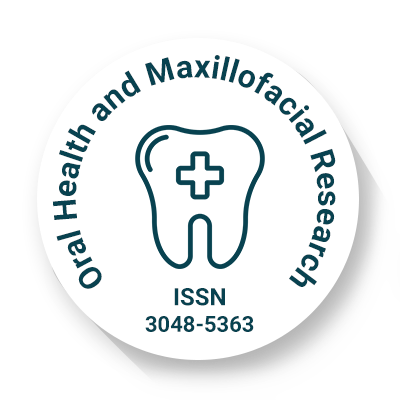
Oral Health and Maxillofacial Research
OPEN ACCESS

OPEN ACCESS
.jpg)
Objectives: Denture soft liners enhance comfort for patients with fungal denture syndrome by
cushioning the tissue surface. Integration of them with antifungal agents further improves
treatment outcomes. This study evaluates the drug release and antifungal efficacy of three
antifungal agents - posaconazole, voriconazole, and chlorhexidine, incorporated into a resin?based denture soft liner (COE-Soft) at 1% concentration. The impact on antifungal activity,
drug release, and the physical properties of the liner, including water sorption, color stability,
and degree of conversion (DC), was assessed.
Methods: 240 samples were divided into two groups of 120 each. The samples were evaluated
for antifungal activity against Candida albicans, drug release profiles, water sorption, color
stability, and DC. Minimum inhibitory concentrations (MIC) were determined for each agent:
posaconazole, voriconazole, and chlorhexidine
Results: The MIC values were 0.8 ?g/ml for posaconazole and voriconazole, and 25 ?g/ml for
chlorhexidine against Candida albicans. Chlorhexidine showed the highest release rate among
the agents, followed by posaconazole and voriconazole. It improved the DC and color stability
of the liner, while posaconazole and voriconazole decreased these properties and increased
water sorption. Voriconazole exhibited the highest mean antifungal activity (35.73 ± 1.83),
followed by posaconazole (21.8 ± 1.37) and chlorhexidine (13.73 ± 3.03).
Significance: Chlorhexidine enhances the physical properties of denture soft liners but has a
higher MIC. Posaconazole and voriconazole exhibit stronger antifungal activity, though they
compromise physical properties such as water sorption and color stability.